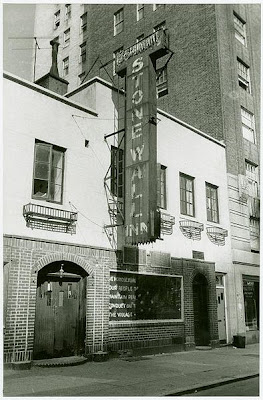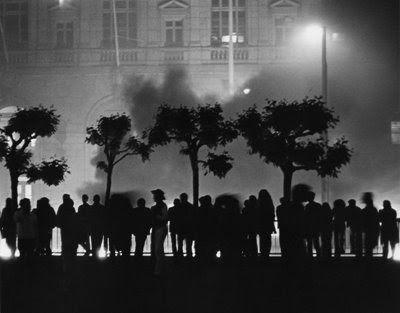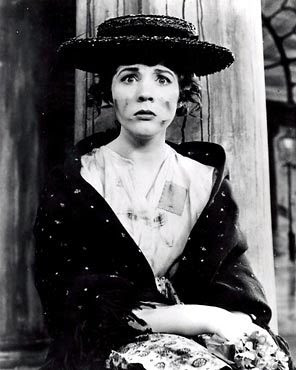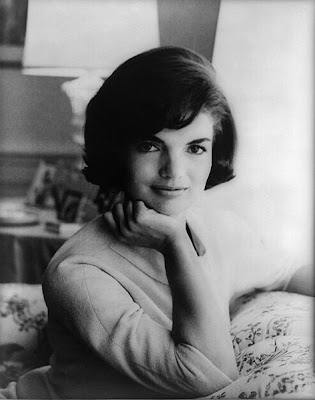
pollenhaus.com/UMB/HIS112/images/Russia2.jpg
In several earlier posts I have listed some of Napoleon's mistakes or miscalculations. Among these were his failure to grant independence to Poland, particularly after his affair with Marie Waleska. That relationship produced a son, Alexandre, claimed by Marie's husband as his own. As an adult Alexandre became the foreign minister to Napoleon III. Napoleon III (generally known as "Louis Napoleon" before he became Emperor) was the son of Louis Bonaparte (brother of Napoleon I), and Hortense de Beauharnais (daughter of Napoleon I's wife Josephine de Beauharnais by her first marriage). So by a curious twist, Napoleon's natural, but illegitimate, son became the servant of Napoleon's eventual heir-- both his nephew through Napoleon's brother Louis and his step-grandson through his step-daughter Hortense.
Then there was Napoleon's brother Joseph, whom he placed on the throne of Spain. All that did was to foster guerilla resistance, which led eventually to the first successes of Arthur Wellesley, the future Duke of Wellington.
Napoleon's biggest mistake, however, may have been the divorce of his first wife Josephine, Hortense's mother. That may sound preposterous on the face of it, but hear me out. At the moment, I can't locate the book I found a number of years ago at the Salvation Army thrift store, so I'll have to trust my memory.
May 28th, 1812 may have been the apex of Napoleon's power, authority and prestige. On that day he reviewed a military parade in Dresden. Riding in front of him were the various crowned heads, princes, and other minor royalty of Europe, some of whom were his relatives, placed on their thrones by Napoleon himself. It was just before the invasion of Russia, which led to his eventual downfall.
What Napoleon didn't know was that the Turkish Sultan in Constantinople secretly broke his treaty with France and allied himself with the British that very same day. This act would have enormous consequences. The original plan was for the Turks to support and supply the French during the invasion of Russia. Instead, the Turks allied themselves with Napoleon's enemies.
Why did the Sultan switch sides? There's no real documentation; but speculation convinces me. Mahmud II was the Son of Abdülhamid I and Nakşidil Sultan. Although it has not been proved conclusively, it is very likely that Nakşidil was Aimee du Buc de Rivery, first cousin of Josephine Beauharnais Bonaparte.
Below is a long quote from another blog entitled "A Very Fine Romance: A Blog About Romance, Beauty, and the Exotic In All Forms"
Aimee du Buc de Rivery: Cousin of the Empress Josephine & The Ottoman Turkish Connectio
No one will know the actual fate of Aimee du Buc de Rivery who was the empress Josephine's cousin. Nevertheless for almost two hundred years there has been so much speculation that the story of two empresses who were related and ruled simultaneously has captured the imaginations of writers as diverse as Prince Michael of Greece to the African-American fiction writer Barbara Chase-Riboud.
The story of Aimee du Buc de Rivery runs basically that she was a cousin of the empress Josephine, and like her more well-known cousin was born on the island of Martinique. When both were 12 they went to a famous black fortune teller on their island who told Josephine that her second husband would be so powerful and glorious that she would be more prestigious than the queen of France. Aimee was told an even more incredible prophesy. She would be captured by pirates and sold to a powerful ruler who because of her beauty, would make her his mistress and favorite. When she had a son by this ruler this would increase her position. Through her son, she would have great power and influence.
The legend of Aimee goes on to say that when she was returning to Martinique from studying in a convent in France, her ship was hijacked by Barbary pirates. She was captured and given to the Bey of Algiers. In order to garner favor with the Ottoman sultan, this girl of great beauty was sold into the harem in Topkapi Palace in Istanbul. There Aimee captured the eye of the sultan and became his wife. She was given the name of Nakshedil, and is said to have taught her husband French, thus opening up the Ottoman Empire to France and ultimately the west. Because of her, other reforms were introduced during her husband's and son's reign.
Aimee proved to be a survivor in the violent, political atmosphere of the harem and Topkapi Palace. Though she converted to Islam, she was always in her a heart a Christian. When she was dying, her son allowed for the first time for a priest to come into the palace to administer the last rites to his mother. So ends the story of the girl whom history and legend says was a cousin of Josephine, born to a wealthy family on Martinique and who died in a palace in Istanbul, the most powerful woman among the Turks.
I first heard about Aimee du Buc de Rivery when I read Barbara Chase-Riboud's novel, Valide: A Novel of the Harem while I was a graduate student. A black Muslim woman, whom I am not sure was orthodox or a member of The Nation of Islam, told me about Aimee and the book. Life is unpredictable, so when I read this novel of Romance, violence, and intrigue, I had no way of knowing that Turkey would become a part of my life in so many ways years later.
Posted by Sincerae (means "Morningstar")
Sultan Mahmud II was very possibly a first-cousin-once-removed from the Empress Josephine. One of the difficulties in proving this is that the Topkapi palace policy did not keep written records of women, only of men. But it is known that Aimee ended up in the harem, and that Mahmud's mother was French.
Napoleon, of course, reluctantly divorced his first wife Josephine, because she was unable to bear him a son and heir.
So Napoleon married Marie Louise, the daughter of Francis II, Holy Roman Emperor (Francis I of Austria) and of his second wife, Maria Theresa of the Two Sicilies. Marie Louise was also a double great-granddaughter of Maria Theresa of Austria, thus a double grandniece of Marie Antoinette, as she was a paternal granddaughter of Leopold II, Holy Roman Emperor (Maria Theresa's son, Marie Antoinette's brother) and a maternal granddaughter of Marie Caroline of Austria, Queen of Naples and Sicily (Maria Theresa's daughter, Marie Antoinette's sister).
Geneaology courtesy:wikipedia.com
Marie Louise did provide Napoleon with a son and heir, Napoleon II, the "King of Rome," who died as a young man in Vienna. But the very fact that Napoleon divorced Josephine to do so, may have been the deciding factor in Mahmud II's decision to switch sides and not support the French in their invasion of Russia in 1812. It may have been the old story that "Blood is thicker..." or, "You can't do that to my mother's cousin."






















